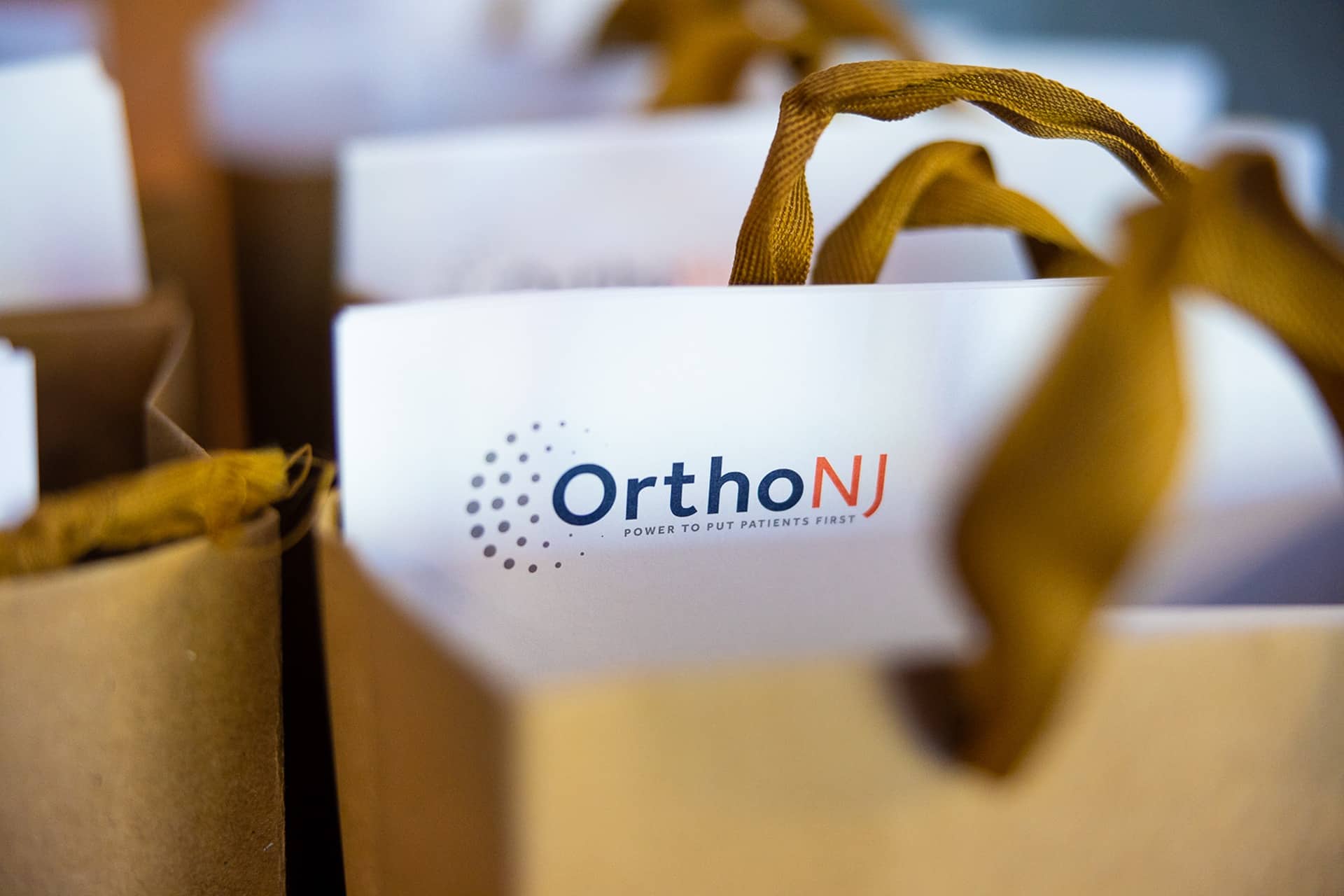Cervical Radiculopathy
Cervical radiculopathy occurs when a nerve root in your neck is pinched or irritated as it exits the spine. This can cause pain, tingling, numbness, or weakness that travels from the neck into the shoulder, arm, or hand.
The condition involves the cervical vertebrae, intervertebral discs, facet joints, ligaments, and nearby soft tissues that surround and protect the nerve roots. Common triggers include age related disc wear, bone spurs, and herniated discs; less often, symptoms can follow a fall, collision, heavy lifting, or repetitive strain. The team at OrthoNJ can help you understand your diagnosis and choose the appropriate treatment plan.
What Are the Symptoms of Cervical Radiculopathy?
- Neck and arm pain
- Aching, burning, or sharp pain that begins in the neck and can radiate to the shoulder blade, arm, or hand. Turning or tilting your head often makes it worse.
- Numbness or tingling
- Pins and needles or reduced sensation in a pattern that follows a specific nerve root.
- Muscle weakness
- Difficulty lifting the arm, extending the elbow or wrist, or decreased grip strength. Objects may feel heavier or slip from your hand.
- Reflex changes
- Diminished or absent reflexes in the affected arm compared with the other side.
- Limited neck motion
- Neck stiffness and reduced range of motion due to pain and muscle guarding.
- Symptoms that vary with position
- Relief with a neutral neck or by supporting the arm, with flares during prolonged phone or computer use.
What Causes Cervical Radiculopathy?
- Herniated cervical disc: Inner disc material protrudes and presses on a nearby nerve root.
- Age related disc and joint wear: Degenerative disc changes and arthritis can narrow the space where nerves exit the spine.
- Bone spurs and foraminal stenosis: Extra bone growth around joints or disc spaces can pinch the nerve root.
- Repetitive strain and poor posture: Long periods of looking down or forward head posture can stress the neck and irritate nerve roots.
- Traumatic injury: Falls, collisions, or sudden lifting can damage discs or joints and inflame a nerve.
- Congenital narrow canal: Some people are born with less space for nerves, which raises the risk of compression.
- Other risk factors: Heavy manual work, vibration exposure, and smoking may contribute to disc wear and symptoms.
How to Prevent Cervical Radiculopathy
- Posture awareness: Keep ears aligned over shoulders and avoid prolonged slouching to reduce neck strain.
- Ergonomic setup: Position monitors at eye level, bring work close to you, and use a headset for calls.
- Strength and flexibility: Regular exercises for the neck, shoulder blades, and core support the spine and improve tolerance to activity.
- Frequent movement breaks: Stand, stretch, and change positions every 30 to 60 minutes during desk or device use.
- Safe lifting: Lift with your legs, keep loads close to your body, and avoid twisting the neck while carrying.
- Healthy lifestyle: Do not smoke, maintain a healthy weight, and stay active to support disc and joint health.
- Supportive sleep: Use a pillow that keeps your neck in a neutral position and avoid sleeping on your stomach.
When to Seek Orthopaedic Care for Cervical Radiculopathy
- Severe or persistent pain: Pain that does not improve with rest and simple measures over a few days or prevents you from daily activities should be evaluated.
- Progressive weakness or numbness: Worsening strength, sensation, or coordination in the arm or hand needs prompt assessment.
- Hand clumsiness or dropping objects: Difficulty with buttons, keys, or grip can signal nerve involvement.
- Balance or coordination changes: New problems with walking or fine motor control require timely medical attention.
- Symptoms after trauma: Neck and arm pain following a fall, collision, or heavy lift should be checked to rule out serious injury.
- Disrupted sleep or work: Pain that interferes with rest or job tasks is a reason to seek care.
- Urgent red flags: New bowel or bladder control changes along with neck symptoms are uncommon but require urgent evaluation.
Most cases of cervical radiculopathy improve with non-surgical care. Evaluation by a spine or nerve specialist such as a physiatrist, neurologist, or orthopedic spine/neurosurgery clinician can help confirm the diagnosis and guide treatment. Surgery is typically reserved for progressive neurological deficits, signs of spinal cord involvement (myelopathy), or pain that does not improve with appropriate conservative treatment.
At OrthoNJ, we evaluate your symptoms, explain your diagnosis in clear terms, and build a care plan that fits your goals so you can return to the activities you enjoy.
Find An OrthoNJ Location
Contact one of OrthoNJ's locations spread out through all of New Jersey.
Why Choose an OrthoNJ Doctor for Your Care?
OrthoNJ is different from your typical medical provider. Unlike many in the industry, we prioritize patient care over profits. Our six divisions work collaboratively to ensure the best outcomes for our patients. We believe in the "Power to Put Patients First," and our doctors and divisional partners strive to uphold this commitment in every aspect of our care.
- With over 120 fantastic physicians, all board-certified, board-qualified, or fellowship-trained, OrthoNJ offers top-tier expertise across a wide range of specialties.
- We serve over 250 communities throughout New Jersey, providing treatment and continuing care for various orthopedic needs.
- With more than 30 statewide offices, our reach extends across the entire state. Whether in North Jersey, South Jersey, or anywhere between, OrthoNJ proudly serves you.
This treatment info is for informational purposes only. Treatment and recovery vary person to person, and you should consult with your treating physician and team for details on your treatment and recovery process.
